Search Results
Fine Jewelry University Articles matching: “Gold with blue stone”
Showing only FJU Article results. Click here to show all results.
Fine Jewelry University (Show All FJU Articles)
-
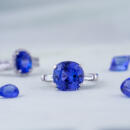
Gem in the Spotlight: Tanzanite
Beauty and rarity are two wonderful traits in a gemstone. Tanzanite has them both. In fact, it is estimated that Tanzanite is 1,000 times rarer than diamond. But, what makes… majority (current estimates are around 95%) of tanzanite is heat treated to help bring out the vibrant blues. The stones that haven’t been heated by humans were heated through natural effects while they were still underground. Without … isn’t heated and is still pretty enough for jewelry displays trichroism. Trichroism is an effect that causes gemstones to display different colors when viewed at different angles. Tanzanite in its raw form has three colors: blue, purple, …
-
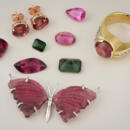
Gem in the Spotlight: Tourmaline
…Tourmaline becomes electrically charged when under mechanical stress (squeezed or impacted). This effect allowed the stone to be used in early sonar systems in the First World War as well as in extremely sensitive pressure gauges in …long trend of confusing tourmaline with other gems. Another notable example of this is the “Caesars Ruby,” the 255ct stone in the Russian crown jewels that has been traded between France, Russia, and Sweden for centuries. It was long been …
-
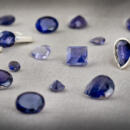
Gem in the Spotlight: Iolite
Iolite is maybe not the first gemstone people think of for their blue-violet jewelry, but it should be near the top of the list. Iolite’s color range of … popular gems, iolite cannot be heat treated to enhance its color. The color you see is the natural color of the stone when it was first discovered. This adds value to many gem buyers who don’t want a treated gemstone. Color Me Impressed … is caused by differing absorption of light rays in doubly refractive crystals. Thus, no singly refractive gemstone can exhibit pleochroism. The process works because of the ability of a gem to absorb different wavelengths of transmitted …
-
The Birthstones
January’s Birthstone: Garnet January babies born in the midst of cold, white (valley fog) and at times stark surroundings are rewarded … long-lasting love, and prevents hearing difficulties. Learn more about Garnet and Tasvorite Garnet February’s Birthstone: Amethyst Amethyst, transparent purple quartz, is the most important quartz variety used in jewelry. Purple has long … in the ornamentation of Catholic and other churches in the Middle Ages. It was, in particular, considered to be the stone of bishops and bishops still often wear amethyst rings. The Greek work “amethystos” basically can be translated as “…
-
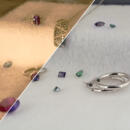
Gem in the Spotlight: Alexandrite
… known around the world as one of the most sought-after gems for the better part of 200 years. But, what makes this stone so special? Gemology of Alexandrite Alexandrite is the extremely rare, color-change variety of a gem species called … of light very well, only transmitting green and red light. This means that depending on the light source the stone will reflect more of the accent colors of light. Since fluorescent light has a stronger greenish-blue component, the stone …
-

Jewelry Repair FAQ
… related questions. If you have a question that you don’t see answered here, please contact us and let us know. A gemstone fell out of my ring. Will the new stone match the old one? We get this question all the time. People want their …, sapphires, rubies, opals, pearls, and more in all shapes and sizes to choose from when selecting a replacement stone for repairs. Matching stones takes a discerning eye, attention to detail, extensive gemological training, and years of …
-

The Magic of Polarized Light
… Polarizing filters are critical to many fields of study. Without them, we wouldn’t be able to easily identify gemstones, TVs and monitors wouldn’t work in the same way, and the latest blockbuster movie wouldn’t pop off the screen the way … them to function efficiently as they do without negative side effects. Using Polarized Light in Gemology Some gemstones, due to their unique chemical structure, actually polarize light themselves. These gems are doubly refractive (DR) and…
-
Caring for and Cleaning Your Jewelry
…. This will take away the shine. Ammonia-based cleaners clean diamonds and gold well but they may hurt other gemstones. It is also not a good idea to soak jewelry for very long in ammonia-based cleaners. Some anti-bacteria cleaners can … especially). It is safe to use an ultrasonic cleaner with diamond jewelry. Ultrasonic’s can damage other gemstones, know for certain it is safe to use. Ethyl alcohol is good for rinsing diamonds because it evaporates so quickly. Do not …
-
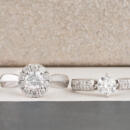
Anatomy of a Ring
… The gallery of a ring is a somewhat ambiguous term that refers to the underside of the ring beneath the center stone. There is often a design on the top part of the ring that is lifted up above the finger. In order to maintain the …next to each other. The constant friction with another ring can actually wear through the gallery leaving the center stone at risk of calling out. This is why we typically recommend that you have your rings soldered together if you plan to…